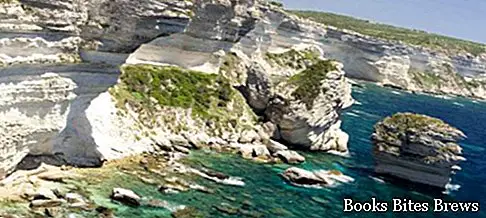7-day itinerary to get around Corsica by car, including the main places of interest, moving from Capo Corso to the Bocche di Bonifacio.
General informations
Third island by extension, after Sicily and Sardinia, among those present in the western Mediterranean Sea, Corsica belongs politically to France.
The Bocche di Bonifacio, a stretch of sea about twelve kilometers wide, separate it from the northern coast of Sardinia.
Piombino, located about eighty-two kilometers as the crow flies, represents the closest Italian peninsula, while the French coast is about one hundred and seventy kilometers away.
The territory of Corsica is mainly mountainous, being crossed from north-west to south-east by a chain of mountains that divides it, under the geological and administrative aspect, into two regions.
Many peaks are around 2000 meters above sea level, of which Monte Cinto is the largest with 2706 meters above sea level, about a third of its territory is a protected National Park, the coasts stretch for about 1200 kilometers, of which only one fourth are made up of beaches and located mainly in the eastern part of the island.
Route by car
Bastia is the main tourist port of the island, located in the north-eastern part and facing Tuscany.
It is an ancient town that extends to the base of Capo Corso, it is pleasant to walk through its alleys and squares, visit the old port, Piazza Saint-Nicolas, where the statue of Napoleon is located, the Church of Saint Jean Baptiste, the Sainte Marie Cathedral and the Sainte Croix Church.
Capo Corso, located north of Bastia, is also known as the "finger of the island", a land that stretches into the sea to the north for about 40 km., Crossed in all its length by a mountain range that reaches its maximum altitude of 1307 m meters above sea level with Monte Stello.
The western side of the chain is jagged and overhanging the sea, the eastern one is lower and with various sandy beaches.
Clinging to the rocks overlooking the sea are the villages of Nonza and Pino, with their respective marinas at the base.
Recommended readings- Champagne Ardenne (France): what to see in the region
- Saint Tropez (France): what to see
- Burgundy (France): what to see in the region
- Lourdes (France): what to see where the Madonna appeared
- Picardy (France): what to see in the region
In the area of Capo Corso the towns, Centuri, Erbalunga, Barcaccio are worth a visit, there is also a path, called Il Sentiero del Doganiere, which runs along the northern part of Capo Corso and can be undertaken starting from Macinaggio or Centuri, it is a very beautiful path marked by the Genoese watchtowers.
Between Nonza and Saint Florent is Patrimonio, a town famous for its vines that produce excellent wines, in particular Muscat.
Saint Florent, a lively marina and starting point of the path that winds along the coast of the Désert des Agriates, is a very fascinating area between the sea and the mountain, including enchanting beaches, rocky peaks, and solitary inlets, as well as be a natural area protected by the French public body Conservatoire du Littoral.
The route is 36 km long and ends in Ostriconi.
Continuing we meet Ile Rousse, a pretty town founded by the father of the Corsican homeland Pasquale Paoli during the short period of independence of Corsica, and Calvi with its port area, its fortified citadel and the beauty of its beaches.
In the summer, a small train, the "trinighellu", leaves from Ile Rousse and stops at all the beaches and reaches Calvi taking about an hour.
Corte, the capital of the independent state in the eighteenth century, is located in the innermost territories of the island and is considered the historical as well as cultural center of Corsica.
The oldest part is the fortress that dominates the city from a rocky promontory.
In the historic center are the National Palace, the Musée de la Corse and the University of Corsica Pasquale Paoli.
Corte is also a valid starting point for excursions in the Regional Natural Park.
Ajaccio, capital of the southern Corsica department, is a town overlooking the west coast of Corsica, in the center of a beautiful gulf, it also constitutes an important port as well as a city of art.
Ajaccio was the birthplace of Napoleon Bonaparte, the place where the emperor was born has been transformed into a museum.
Near Maison Bonaparte, there is the beautiful sixteenth century Notre-Dame de la Miséricorde Cathedral, where Napoleon was baptized.
The Fesh Museum is very interesting for its precious collection of Italian art.
Bonifacio, a town located at the southern end of Corsica, has origins dating back to the year 830, when Bonifacio, count of Tuscany, had a castrum built, as a defense against the Saracens.
The upper town, perched atop a limestone cliff, has retained its medieval appearance with the Bastione dello Stendardo, the Place des Armes, the Church of Saint Dominique, which features Gothic elements, the Sainte Marie Majeure Church, the Church Sanit-Jean, the Ladder of the King of Aragon, carved sheer above the cliff, and the marine cemetery, one of the most suggestive in the Mediterranean.
From the upper city it is possible to admire a beautiful panorama of the Bocche di Bonifacio and Sardinia.
Departing from the port there are boats to visit caves, cliffs, calanches and Bocche di Bonifacio, Lavezzi and Cavallo islands.




